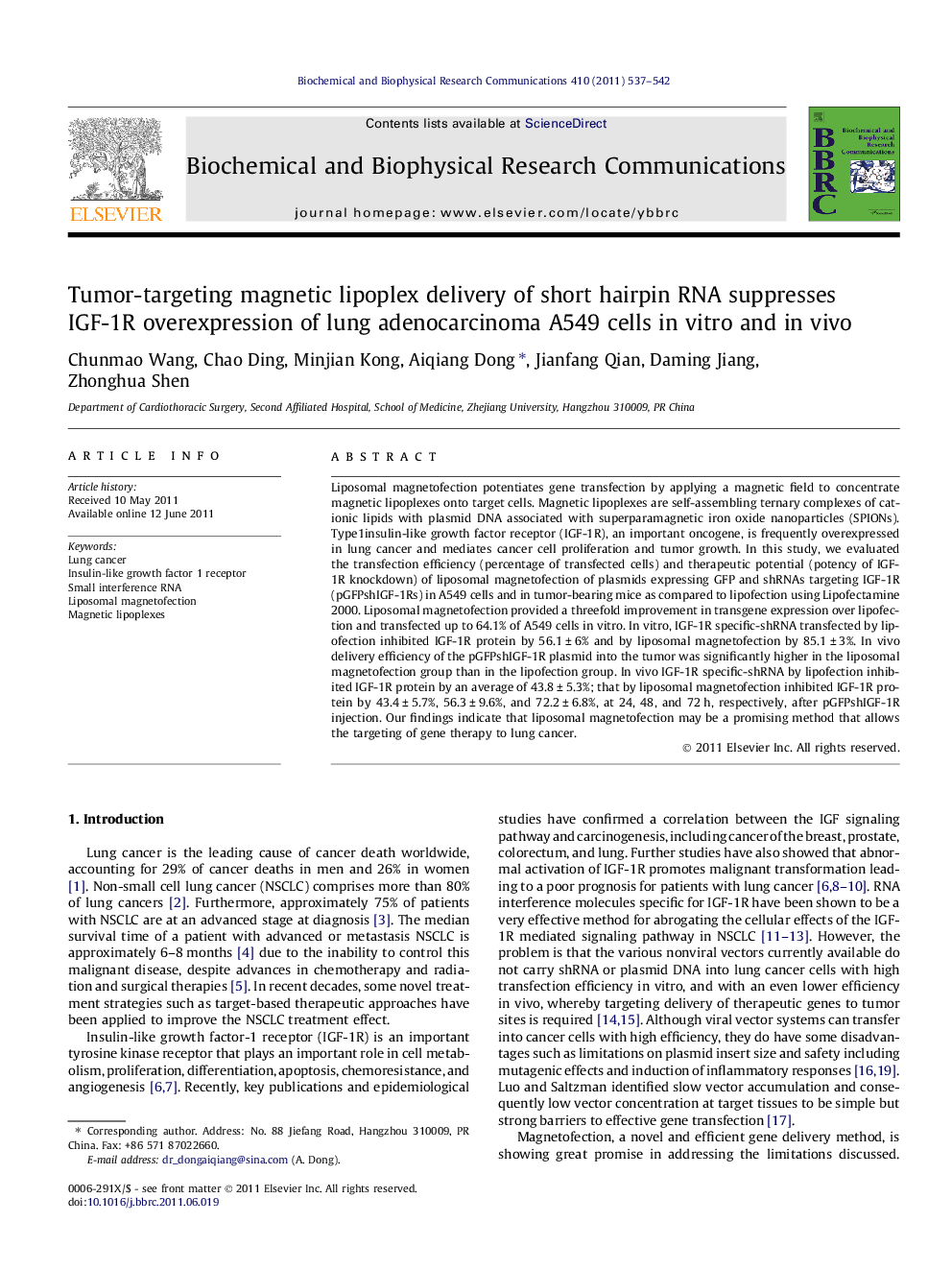| کد مقاله | کد نشریه | سال انتشار | مقاله انگلیسی | نسخه تمام متن |
|---|---|---|---|---|
| 1930530 | 1050517 | 2011 | 6 صفحه PDF | دانلود رایگان |

Liposomal magnetofection potentiates gene transfection by applying a magnetic field to concentrate magnetic lipoplexes onto target cells. Magnetic lipoplexes are self-assembling ternary complexes of cationic lipids with plasmid DNA associated with superparamagnetic iron oxide nanoparticles (SPIONs). Type1insulin-like growth factor receptor (IGF-1R), an important oncogene, is frequently overexpressed in lung cancer and mediates cancer cell proliferation and tumor growth. In this study, we evaluated the transfection efficiency (percentage of transfected cells) and therapeutic potential (potency of IGF-1R knockdown) of liposomal magnetofection of plasmids expressing GFP and shRNAs targeting IGF-1R (pGFPshIGF-1Rs) in A549 cells and in tumor-bearing mice as compared to lipofection using Lipofectamine 2000. Liposomal magnetofection provided a threefold improvement in transgene expression over lipofection and transfected up to 64.1% of A549 cells in vitro. In vitro, IGF-1R specific-shRNA transfected by lipofection inhibited IGF-1R protein by 56.1 ± 6% and by liposomal magnetofection by 85.1 ± 3%. In vivo delivery efficiency of the pGFPshIGF-1R plasmid into the tumor was significantly higher in the liposomal magnetofection group than in the lipofection group. In vivo IGF-1R specific-shRNA by lipofection inhibited IGF-1R protein by an average of 43.8 ± 5.3%; that by liposomal magnetofection inhibited IGF-1R protein by 43.4 ± 5.7%, 56.3 ± 9.6%, and 72.2 ± 6.8%, at 24, 48, and 72 h, respectively, after pGFPshIGF-1R injection. Our findings indicate that liposomal magnetofection may be a promising method that allows the targeting of gene therapy to lung cancer.
► We compared lipofection with magnetofection about difference of transfection efficiency on delivery a therapeutic gene in vitro and in vivo.
► We investigated the difference of shRNA induced by magnetofection and lipofection into A549 cell and subcutaneous tumor to knockdown IGF-1R overexpressed in A549 cell and A549 tumor.
► We investigated in vivo shRNA silenced IGF-1R overexpression 24, 48, and 72 h after shRNA intravenous injection into tumor-bearing mice by way of magnetofection and lipofection.
► Our results showed that magnetofection could achieve therapeutic gene targeted delivery into special site, which contributed to targeted gene therapy of lung cancers.
Journal: Biochemical and Biophysical Research Communications - Volume 410, Issue 3, 8 July 2011, Pages 537–542